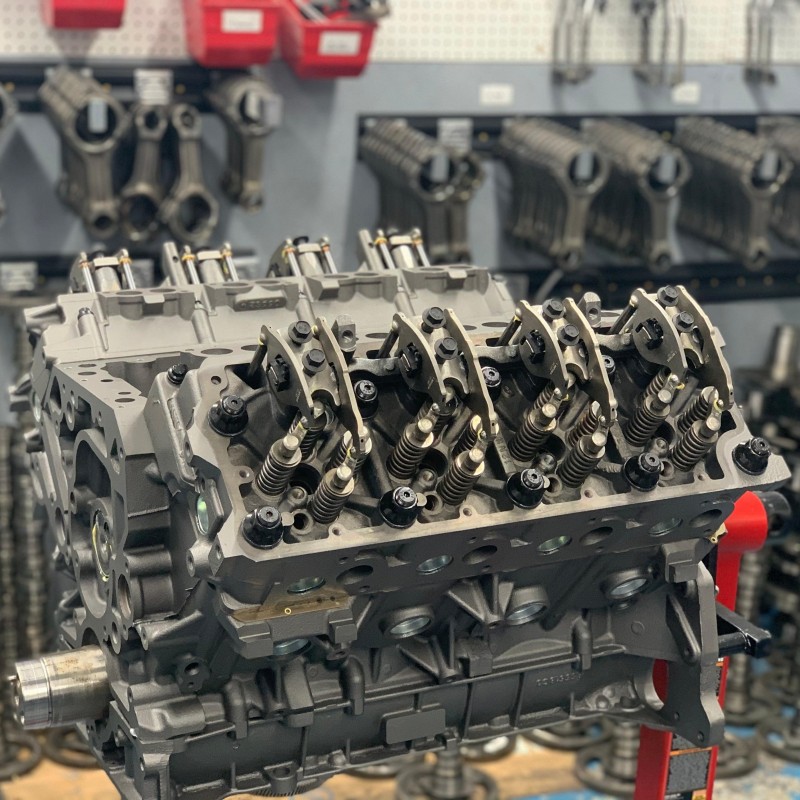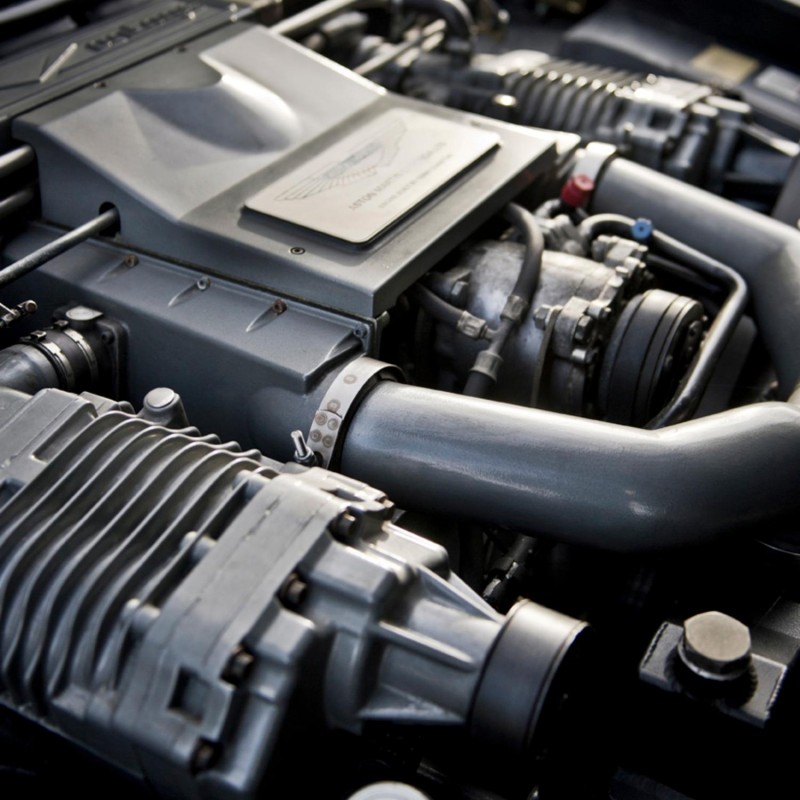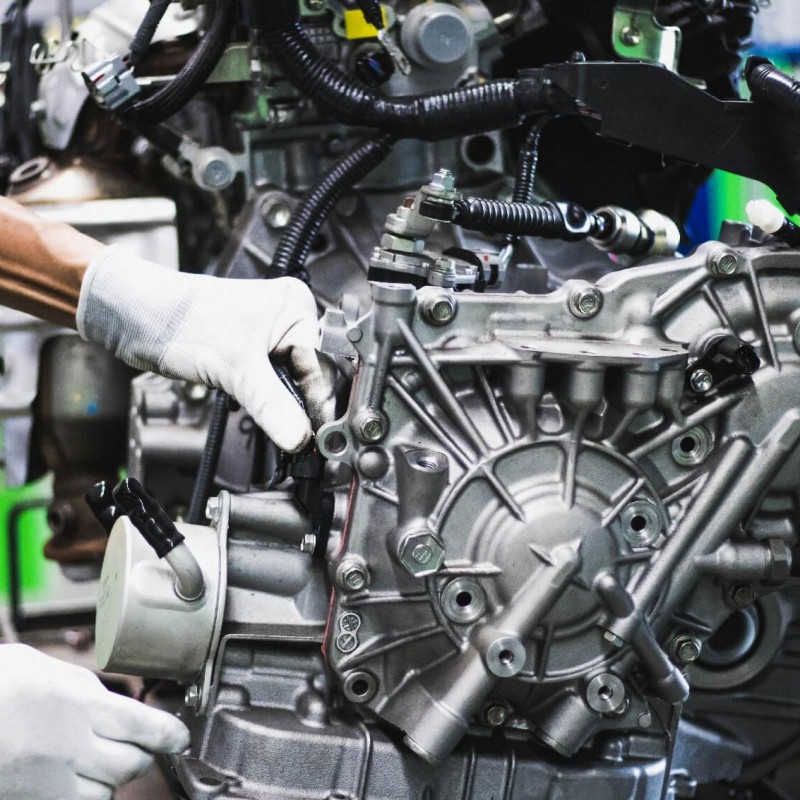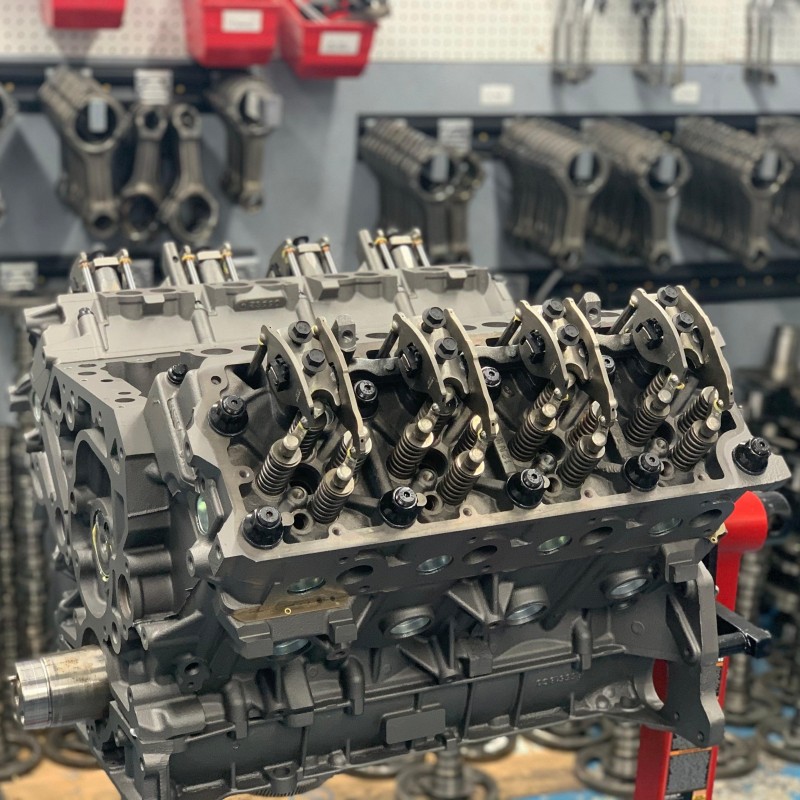Engine diagnostics refer to the process of identifying and analyzing problems within a vehicle’s engine and its associated components. In today’s technologically advanced automotive industry, understanding engine diagnostics has become an essential skill for mechanics, automotive enthusiasts, and vehicle owners alike. Engine diagnostics not only allows for timely repairs but also enhances the overall performance and efficiency of the vehicle. As engine problems can lead to significant issues, including reduced fuel efficiency and increased emissions, the importance of timely and accurate diagnostics cannot be overstated. In this comprehensive guide, we will explore the fundamentals of engine diagnostics, including common diagnostic tools, methods for troubleshooting issues, and tips for effective maintenance. Whether you are a professional mechanic or just a car owner wanting to understand more about your vehicle, this article will equip you with the essential knowledge relating to engine diagnostics.
Understanding Engine Diagnostics
To fully appreciate the importance and application of engine diagnostics, it is vital to first understand what it encompasses.
Definition of Engine Diagnostics
Engine diagnostics involves a systematic approach to identifying faults or malfunctions within an engine. This process can utilize advanced tools and technologies to assess engine performance, sensor functionality, and other electronic components that contribute to the overall operation of the vehicle.
The Importance of Diagnostics
Understanding engine diagnostics holds immense importance for vehicle performance. Every engine generates a multitude of data points that can signal potential issues. By performing diagnostics, mechanics can pinpoint the exact source of a problem, allowing for targeted repairs that can save time and money.
Moreover, effective engine diagnostics can lead to enhanced fuel efficiency and reduced emissions. When engines function optimally, they run more efficiently, thus having a positive impact on the environment by minimizing pollutants released.
Components and Systems Involved in Engine Diagnostics
Engine diagnostics covers various components and systems that work together to facilitate engine operation, including:
- Fuel System: This includes fuel injectors, pumps, and sensors that manage fuel delivery to the engine. Diagnostic tools can assess each component’s functionality.
- Ignition System: Engine diagnostics also evaluates the ignition timing, spark plugs, and ignition coils. Analyzing these components ensures that they work synchronously for optimal performance.
- Exhaust System: Diagnostics can help identify issues in the exhaust system, such as clogs, leaks, or malfunctioning sensors, which can significantly impact engine performance.
- Emission Control Systems: These systems play a crucial role in regulating the vehicle’s emissions and ensuring compliance with environmental standards. Diagnostics is critical for troubleshooting issues in this area.
By understanding these components, you can appreciate the complexity of engine diagnostics and how critical it is to address issues as they arise.
Common Engine Problems Identified through Diagnostics
Engine diagnostics can pinpoint a range of issues that may arise within a vehicle’s engine. Understanding these common problems can help you recognize symptoms and seek resolution promptly.
Check Engine Light Activation
One of the most common indicators that something is wrong with your engine is the activation of the check engine light. This warning light can point to various issues, including:
- Sensor Malfunctions: An issue with one of the engine sensors, such as the oxygen sensor or mass airflow sensor, can trigger the light.
- Ignition Problems: Issues within the ignition system can also prompt the check engine light to illuminate.
- Fuel System Issues: Faulty fuel injectors or issues with the fuel pump can also be contributors to this warning.
Poor Fuel Efficiency
Experiencing sudden drops in fuel efficiency can indicate underlying engine problems. Common causes may include:
- Clogged Fuel Filters: When fuel filters become clogged, they impede fuel flow, reducing overall performance.
- Dirty Air Filters: A dirty air filter can restrict airflow to the engine, leading to inefficient combustion and higher fuel consumption.
- Faulty Sensors: Malfunctioning sensors can affect the air-fuel mixture, leading to inefficiencies and poor performance.
Engine Overheating
Overheating engines can lead to severe damage if not addressed immediately. Common reasons for overheating include:
- Coolant Issues: Low coolant levels or leaks in the cooling system can result in overheating.
- Thermostat Failures: A failed thermostat may prevent the flow of coolant, causing the engine to heat up.
- Blocked Radiators: Build-up or debris blocking the radiator can hinder effective cooling.
Unusual Engine Noises
Unusual sounds from the engine can also indicate trouble. Some problems to consider include:
- Knocking or Pinging: This noise could suggest issues with the fuel being used or potential problems with the ignition timing.
- Tapping Sounds: If you hear tapping sounds, this may point to low oil levels or worn-out engine components.
- Hissing or Squealing: Hissing or squealing may suggest a coolant leak or issues with the serpentine belt.

Exhaust Emissions
Increased exhaust emissions are not only concerning for the environment but also indicate potential engine malfunctions. Common causes include:
- Catalytic Converter Problems: A malfunctioning catalytic converter can lead to an increase in harmful emissions.
- Sensor Malfunctions: Issues with the oxygen sensor can lead to improper readings, affecting fuel efficiency and emissions.
Difficulty Starting the Engine
Having trouble starting your engine can be frustrating and worrisome. Problems that lead to starting issues can include:
- Weak Battery: A dying or dead battery is one of the most common causes of starting difficulties.
- Faulty Starter Motor: If the starter motor has issues, it may fail to crank the engine.
- Fuel Delivery Issues: Problems with the fuel pump or fuel system can prevent adequate fuel flow to ignite the engine effectively.
Understanding these common engine problems illuminated through diagnostics will help you recognize symptoms and seek timely solutions.
Essential Tools for Engine Diagnostics
To accurately diagnose engine issues, specific tools and equipment are indispensable. Familiarity with these tools can enhance your ability to troubleshoot your vehicle effectively.
OBD-II Scanner
An On-Board Diagnostics (OBD-II) scanner is one of the most essential tools for engine diagnostics. This device plugs into your vehicle’s diagnostic port and retrieves trouble codes generated by the engine’s electronic control unit (ECU). The codes provide insight into potential malfunctions and guide technicians towards solutions.
Multimeter
A multimeter is invaluable for diagnosing electrical problems. This multi-functional device measures voltage, current, and resistance, allowing you to test various electronic components within the engine, such as sensors, wiring, and battery performance.
Compression Tester
A compression tester measures the pressure within each cylinder of the engine. Low compression could indicate issues with valve seals, piston rings, or head gaskets, making this tool essential for diagnosing internal engine problems.
Fuel Pressure Gauge
This tool measures the fuel pressure in the fuel system. Low fuel pressure might indicate issues with the fuel pump, clogged fuel filter, or faulty fuel injectors.
Timing Light
A timing light helps verify that the ignition timing is set correctly. Incorrect timing can lead to poor engine performance, making this tool crucial for accurate diagnostics.
Exhaust Gas Analyzer
For diagnosing emission problems, an exhaust gas analyzer measures the composition of the exhaust gases. This tool helps ensure that your vehicle meets emissions standards and assists in identifying sources of increased emissions.
Diagnostic Software
Advanced diagnostic software and equipment can interface with your vehicle’s ECU. This technology provides detailed analysis, live data readings, and can offer additional insights beyond simple trouble codes. Many professional-level shops utilize specialized software for in-depth diagnostics.
By leveraging these diagnostic tools, you can efficiently identify engine-related issues, making the repair process smoother and more effective.
The Engine Diagnostics Process
Conducting an effective engine diagnostics process involves a systematic approach. Understanding how to perform diagnostics accurately can increase your efficiency and effectiveness when dealing with engine problems.
Preliminary Checks
Before diving into complex diagnostics, perform preliminary checks to gather initial insights into the vehicle’s condition.
- Visual Inspection: Begin with a thorough visual inspection of the engine bay. Look for signs of leaks, worn components, or damaged wiring.
- Check Fluid Levels: Verify the levels of essential fluids including engine oil, coolant, and transmission fluid.
- Preliminary Information: Gather any information from the driver regarding symptoms, unusual sounds, or changes in performance.
Using Diagnostic Tools
Once preliminary checks are complete, utilize diagnostic tools to delve deeper into potential issues.
- Connect the OBD-II Scanner: Plug in the scanner to the vehicle’s diagnostic port and retrieve codes stored in the ECU. Analyze the codes carefully, noting which components they relate to.
- Inspect Live Data: With some scanners, you can view live data readings. Keep an eye on parameters like engine RPM, fuel trims, and sensor readings while the engine runs.
- Perform Specific Tests: Based on the codes retrieved, use additional diagnostic tools like the multimeter or fuel pressure gauge to perform specific tests on suspected components.
Analyzing the Results
Interpreting the information gathered during diagnostics is crucial for understanding the source of the problem.
- Correlate Codes with Symptoms: Consider the symptoms reported by the driver alongside the retrieved codes. Cross-referencing this information can help narrow down potential causes.
- Check for Common Failures: Research common failure points for the specific make and model. Certain vehicles may have known issues warranting further investigation.
- Document Findings: Keep detailed notes of your diagnostics process, including codes retrieved and tests performed. Documentation can aid in repairs and assist other technicians if needed.
Formulating a Repair Plan
After completing diagnostics, create a structured plan for repairs.
- Prioritize Issues: If multiple problems arise during diagnostics, prioritize them based on severity and implications for safety or functionality.
- Select Quality Parts: If replacement parts are required, source high-quality components that meet vehicle specifications to ensure proper functionality.
- Communicate with the Owner: Discuss the findings and necessary repairs with the vehicle owner. Clear communication helps manage expectations and fosters trust in the repair process.
Executing Repairs
With a proper plan in place, execute the repairs systematically. Retest affected systems after completing repairs to ensure they function correctly. If the initial engine issue persists, revisit the diagnostics process for additional insights.
By following a systematic engine diagnostics process, you can effectively identify problems, formulate effective repair plans, and ensure that vehicles operate safely and efficiently.
Future Trends in Engine Diagnostics
As technology continues to advance, new trends and innovations within engine diagnostics emerge. Staying informed about these developments can enhance your approach to automotive repair.
Advanced On-Board Diagnostics
The automotive industry is rapidly adopting more advanced OBD systems that offer increased capabilities and functionalities. Future vehicles will likely be equipped with OBD systems that not only provide more detailed codes but also offer predictive diagnostics based on driving behavior and performance data.
Artificial Intelligence and Machine Learning
The integration of artificial intelligence (AI) and machine learning into engine diagnostics could revolutionize how vehicles assess and predict issues. AI-driven diagnostics may enable real-time monitoring and analysis, leading to proactive maintenance and repairs before problems escalate.
Mobile Diagnostics Tools
The rise of mobile technology is transforming the diagnostics landscape. Future diagnostic applications may increasingly utilize smartphones, allowing car owners to scan for trouble codes and receive preliminary analyses through dedicated apps. This could empower vehicle owners to perform initial diagnostics and seek assistance more effectively.
Sustainable and Eco-Friendly Technologies
With the industry’s growing focus on sustainability, many manufacturers are developing diagnostic tools designed with eco-friendly materials and practices. The shift toward greener technologies will extend to repairs, with innovations to minimize waste and enhance energy efficiency in diagnostic processes.
Enhanced Connectivity
As cars become more connected, the potential for integrated diagnostics through cloud-based solutions will increase. Real-time access to diagnostics data can ensure that mechanics and manufacturers receive alerts for developing issues. This connectivity may also enhance the efficiency of vehicle recalls and maintenance notifications.
By embracing these trends, you can remain at the forefront of engine diagnostics and adapt your practices for the evolving automotive landscape.

Conclusion
In conclusion, understanding engine diagnostics is fundamental for maintaining your vehicle’s operational health and ensuring efficient performance. From recognizing the characteristics of various components to utilizing diagnostic tools effectively, comprehensive knowledge can help diagnose issues accurately.
Regular engine diagnostics not only prevent minor issues from escalating into major problems but also enhance vehicle efficiency and longevity. By following best practices for diagnostics and employing innovative tools, both novice and experienced mechanics can benefit from a deeper ability to understand engine performance and functionality.
As we move further into an age influenced by rapid technological advancements, the field of engine diagnostics will continue to evolve. Whether you are a professional mechanic, an automotive enthusiast, or simply a car owner, keeping abreast of these changes can significantly impact your approach to vehicle maintenance and repair.
Tags: automotive technology, car repair tips, preventive maintenance